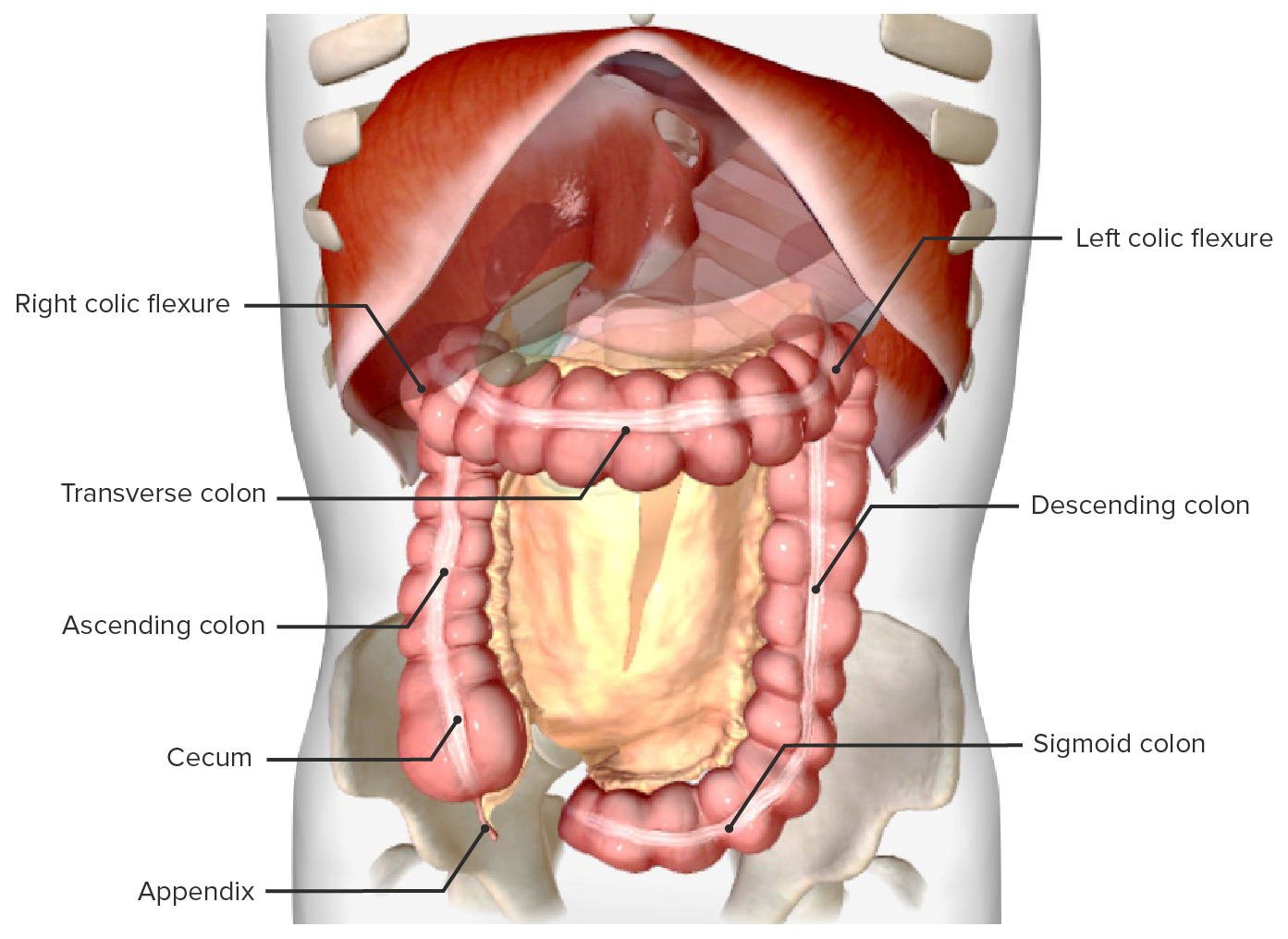Playlist
Show Playlist
Hide Playlist
Surface Anatomy of the Large Intestine
-
Slides Surface Anatomy of the Large Intestine.pdf
-
Download Lecture Overview
00:01 In this topic, we're going to look at the large intestine following on from previous videos which have looked at the stomach, duodenum, and other parts of the small intestine such as the jejunum and the ileum. So let's start off by having a brief introduction around what the large intestine is in its various parts. So, the large intestine really starts as a continuation of the ileum and the ileosecal junction is that connecting point between the small intestines and the large intestines. And here on the screen you can see the cecum. Coming away from the cecum is the vermiform appendix. 00:35 We'll look at that in more detail later on. And then ascending up to the right side of the abdomen we have the ascending colon then traversing across the abdomen from right to left we have the transverse colon. Before it descends down the left hand side is the descending colon finally giving rise to the sigmoid colon and then the rectum. So the large intestine is a really important part of the gastrointestinal tract. And here you can see it's situated within the abdominal cavity. As we've spoken about before, the abdomen can be split into these 9 regions and the large intestine occupies the vast majority of them. 01:13 We can see it's sitting here in the right iliac region extending up the right lumbar and then into the right hypochondriac region as well. It then crosses to the left hand side of the abdomen at the hepatic flexure. The transition point between the ascending and the transverse colon and we can see it there sitting in both the epigastric and the umbilical region. This is going to be incredibly variable from cadaver to cadaver and from patient to patient, but this would be a typical kind of layers of the large intestine. But it's important to realize that it could be slightly different in individuals. As the transverse colon extends across to the left hypochondriac region, it then descends at the splenic flexure to give rise to the descending colon which sits in the left lumbar and then left iliac region before the sigmoid colon goes down into the hypogastric region. So you can see that really is occupying practically all, if not all, in this diagram here of those 9 abdominal regions that we've discussed previously.
About the Lecture
The lecture Surface Anatomy of the Large Intestine by James Pickering, PhD is from the course Anatomy of the Large Intestine.
Included Quiz Questions
Which factor is excluded from the core functions of the large intestine?
- Nutrient absorption
- Water reabsorption
- Absorption of vitamins
- Compacting and storing feces
What is the first part of the large intestine?
- Cecum
- Transverse colon
- Ascending colon
- Ileum
- Sigmoid colon
Customer reviews
5,0 of 5 stars
| 5 Stars |
|
5 |
| 4 Stars |
|
0 |
| 3 Stars |
|
0 |
| 2 Stars |
|
0 |
| 1 Star |
|
0 |




